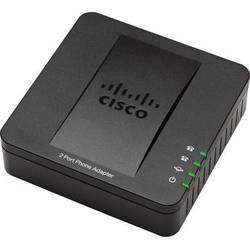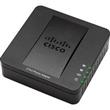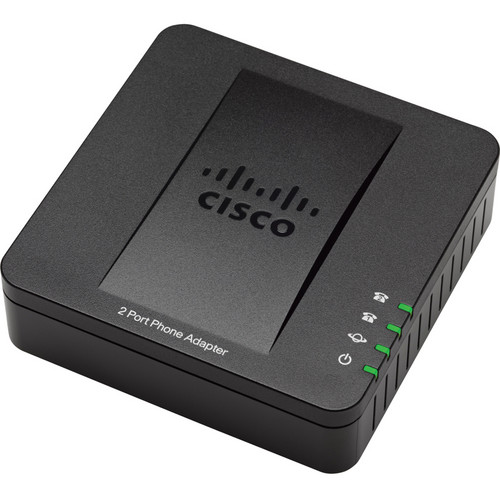-
Productos
-
Accesorios
- ADAPTADORES
- CABLES
- CALCULADORAS
- CARRY DISK
- DATA SWICTH
- ESTUCHES
- FAN COOLER
- FUNDAS
- HUB USB
- LECTOR DE MEMORIAS
- LIMPIEZA LUBRICACION
- MALETINES
- MOCHILAS
- MORRALES
- PAD DE MOUSE
- PLACAS ADAPATADORAS
- SINTONIZADORAS TV
- SOPORTE LCD
- TABLETAS DIGITALIZADORAS
- CONTROL REMOTO
- CAPTURADORAS
- ORGANIZADOR DE CABLES
- EXTENSORES DE SEÑAL
- SPLITER SWITCH
- SOPORTE CELULAR
- TERMOMETRO
Accesorios - Almacenamiento
- Audio
-
Computadoras
- ALL IN ONE
- PC
- PC Y MONITOR
- WORKSTATIONS
Computadoras - Control de Acceso
- Energia
-
Equipos Audiovisuales
- LAMPARAS
- PANTALLAS
- SOPORTES
- Proyectores
- ACCESORIOS
- VIDEO CONFERENCIA
- PANTALLAS INTERACTIVA
Equipos Audiovisuales - Escaners
- Hardware
- Impresion
- Insumos
- Networking
-
Pantallas
- MONITORES
- TELEVISORES
- MONITOR PROFESIONAL
- DISPLAY
Pantallas -
Portables
- Notebooks
- Tablets
- ACCESORIOS
Portables - Punto de Venta
-
Servidores
- ACCESORIOS
- SERVIDORES
- STORAGE
- DATA CENTER
Servidores - Seguridad
- Software
- Telefonia
-
Herramientas
- KIT DE HERRAMIENTAS
- ALICATE
- DESTONILLADOR
Herramientas -
Energia Solar
- Paneles
Energia Solar - Vehiculos Electricos
- ROBOT
-
Accesorios
-
Marcas
- ADAPCORP - ASUS
- ADAPCORP - ACER
- ADAPCORP - DELL
- ADAPCORP - HP
- ADAPCORP - LENOVO
- ADAPCORP - SAMSUNG
- ADAPCORP - SONY
- ADAPCORP - TOSHIBA
- ADATA
- ADOBE
- AFOX
- AMERISOLAR
- AMP
- AMD
- ACER
- ACTI
- AOC
- APC
- APPLE
- AIRLIVE
- ARGOS
- ARKTEK
- ARECONT VISION
- ASROCK
- AUO
- ALCATEL
- AUSVO
- AUTODESK
- ASUS
- ALLIED TELESIS
- AMAZON
- ARMOR
- APEX
- ANVIZ
- ATEN
- AVER
- AVIOSYS
- AXIS
- BAGS
- BANANA
- BELKIN
- BGH
- BANGHO
- BENQ
- BOREAL
- BROTHER
- CASIO
- CASELOGIC
- CMOS
- CANON
- CASECOM
- CASECOM
- CIFRA
- CISCO
- CSL
- CIRKUIT PLANET
- COMPUTAR
- COLORFUL
- COLL MASTER
- CX
- COMODORE
- COUGAR
- CRUCIAL
- CSB
- DAHUA
- DJI - PHANTOM
- DELTA
- DELL
- DCELL
- D-LINK
- DINSTAR
- DUMONT
- DRAYTEK
- EATON
- EDIFIER
- ENCORE
- ELF
- EGI
- AMAZON
- EMERSON
- EPSON
- ESET Endpoint
- EVGA
- EXAKTUS
- E-VIEW
- EZVIZ
- EXO
- EnergyControl
- FARGO
- FOLKSAFE
- FORTINET
- FUJITSU
- FURUKAWA
- FULLMARK
- FIREFLY
- GAINWARD
- PROFIBER
- FUJI
- GABITEL
- GAMEMAX
- GARMIN
- GATEWAY
- GRANDSTREAM
- GALAXY
- GAMDIAS
- GENERICA
- GENERAL ELECTRIC
- GENERAL ELECTRIC
- GENIUS
- GCT
- GREYSAND
- GIGABYTE
- GoPro
- GLC
- G.SKILL
- HASAR
- HIKVISION
- HP
- HP - ALTERNATIVO
- HITACHI
- HONEYWELL
- HUBBELL
- HYUNDAI
- HP - BEATS
- HILTRON
- HUAWEI
- HYNIX
- I3 TECHNOLOGIES
- INNO3D
- IBM
- IBM - LENOVO
- IMATION
- INSTABATT
- INTEL
- IRIS
- INTELAID
- INTCO
- INGINET
- JBL
- JINKO
- KAISE
- KRAMER
- KINGSTON
- KOZUMI
- KASPERSKY
- KWorld
- KRONE
- KGUARD
- KRETZ
- KODAK
- LACIE
- LIEBERT
- LINKWORLD
- LENOVO
- LG
- LEXMARK
- LOCH
- LiteOn
- Liteon - Acer
- LINKSYS
- LOGITECH
- MANHATTAN
- MakerBot
- MCAFEE
- MIKROTIK
- MSI
- LUSTIG
- LENKENG
- MERAKI
- MAXTOR
- MOTOROLA
- MOW SPORT
- MEGATON
- MEMOX
- MIMOSA
- MICROSOFT
- MICROSOFT ACADEMICO
- MICROSOFT OLP
- MLOGIX
- MXQ
- NORTON
- MUSHKIN
- NEC
- NEO
- NISUTA
- NOGANET
- NOBLEX
- NOVATECH
- NSX
- NEWLAND
- OLEX
- OPTOMA
- OKIDATA
- OLIVETTI
- OLYMPUS
- PHILCO
- PACIFIC WIRELES
- Packard Bell
- PACIFIC WIRELESS
- PANDA
- PROCO
- PERFORMANCE
- PLANTRONICS
- PANASONIC
- POLYESTER
- PELCO
- PHILIPS
- PHILIPS
- PNY
- PNY
- POLARIS
- PORTDESIGNS
- POWER COOLER
- RAINBOW
- RCA
- ROSSLARE
- REALTEK
- SAMSUNG
- SANGOMA
- SEAGATE
- SATO
- SEWOO
- SENTEY
- SOLYTECH
- SIEMENES
- SONY
- fCASE
- SURIX
- TCL
- TARGUS
- THERMALTAKE
- THONET & VANDER
- TRIMAKER
- THERMALTAKE
- TRIPLE KIT
- TP-LINK
- TELTRON
- TRV
- TRENDNET
- TRUST
- OCOM
- ONEBIT
- OVERTECH
- PATRIOT
- POLAROID
- PORT DESIGNS
- PROKIT
- PLUNIX
- QNAP
- RF ELEMENTS
- RAYOVAC
- ROKU
- SANDISK
- SEAWAG
- SUPERMICRO
- STEEL
- SYMBOL
- SYSTEM SENSOR
- SYX
- TECMETRO
- TOMI
- TOSHIBA
- TOPOWER
- TYCO - FAYSER
- UBIQUITI
- VIEWSONIC
- WACOM
- XIGMATEK
- X-PRO
- YEALINK
- VIDIUM
- VISION
- VOXSON
- VERBATIM
- WESTERN DIGITAL
- HannStar
- Innolux
- UNITECH
- ULTRACELL
- XVIEW
- WEKI
- LUSTIG
- SkullCandy
- XEROX
- XFX
- ZOM
- ZEBRA
- 3nStar
- SMART
- RUIJIE
- SCHNEIDER ELECTRIC
- YOUJIE
- MOBOX
- YUASA
- ZOTAC
- E-WIN
- PROX
- FLUKE
- WAVLINK
- SANYO
- SYBLE
- Synway
- V-SOL
- XIAOMI
- Servicios IT
- Infraestructura
- Catalogo
- Contacto

GATEWAY CISCO SPA112 2P
$133029
u$s148
IVA incluído.
Nivel de stock: Consultar Disponibilidad
Cod: 10870
Consultar
Contacta para recibir más información
Tel: 4372-9595 WhatsApp +54 9 11 6 745-9595 info@greysand.com.ar
Hasta 12 cuotas sin interés
Ver promociones bancarias
Envíos a todo el país
Más información
Pick up en tienda
Ver ubicación
GATEWAY CISCO SPA112 , 2 Telephone Ports Simultaneous Voice/Data Use Caller ID, Call Waiting, Voicemail
Cisco SPA112 2-Port Phone Adapter
SPA112
| Networking |
MAC address (IEEE 802.3) IPv4 (RFC 791) upgradeable to IPv6 (RFC 1883) Address Resolution Protocol (ARP) Domain Name System (DNS) A record (RFC 1706) and SRV record (RFC 2782) Dynamic Host Configuration Protocol (DHCP) client (RFC 2131) Point-to-Point Protocol over Ethernet (PPoE) client (RFC 2516) Internet Control Message Protocol (ICMP) (RFC 792) TCP (RFC 793) User Datagram Protocol (UDP) (RFC 768) Real Time Protocol (RTP) (RFC 1889) (RFC 1890) Real Time Control Protocol (RTCP) (RFC 1889) VLAN tagging (IEEE 802.1p) Simple Network Time Protocol (SNTP) (RFC 2030) SIP channels support for both UDP and TCP transport |
| Voice Gateway |
SIPv2 (RFC 3261, 3262, 3263, and 3264) SIP proxy redundancy: Dynamic through use of DNS SRV A records Reregistration with primary SIP proxy server SIP support in network address translation (NAT) networks (including Serial Tunnel [STUN]) Highly secure (encrypted) calling using Secure RTP (SRTP) Codec name assignment G.711 (A-law and μ-law) G.726 (32 kbps) G.729 A Dynamic payload Adjustable audio frames per packet Dual-tone multifrequency (DTMF): In-band and out-of-band (RFC 2833) (SIP information) |
| Voice Features |
Independent configurable dial plans with interdigit timers and IP dialing (1 per port) Call progress tone generation Jitter buffer: Adaptive Frame loss concealment Full-duplex audio Echo cancellation (G.165 and G.168) Voice activity detection (VAD) Silence suppression Comfort noise generation (CNG) Attenuation and gain adjustments Flash hook timer Message waiting indicator (MWI) tones Visual messaging waiting indicator (VMWI) using frequency shift keying (FSK) Polarity control Hook flash event signaling Caller ID generation (name and number): Bellcore, DTMF, and European Telecommunications Standards Institute (ETSI) Streaming audio server: Up to 10 sessions Music on hold Call waiting, call waiting and caller ID Caller ID with name and number Caller ID blocking Selective and anonymous call rejection Call forwarding: No answer, busy, and all Do not disturb Call transfer, call return, and call back on busy Three-way conference calling with local mixing Per-call authentication and associated routing Call blocking with toll restriction Distinctive ringing: Calling and called number Off-hook warning tone Advanced inbound and outbound call routing Hotline and warmline calling Long silence (configurable time setting) silence threshold Disconnect tone (for example, reorder tone) Configurable ring frequency Ring validation time setting Tip and ring voltage adjustment setting Ring indication delay setting |
| Fax Capability |
Fax tone detection pass-through Fax pass-through using G.711 Real-time fax over IP using T.38 fax relay (T.38 support is dependent on fax machine and network and transport resilience) |
| Security |
Password-protected system reset to factory default Password-protected administrator and user access authority Provisioning, configuration, and authentication HTTPS with factory-installed client certificate HTTP digest: Encrypted authentication using MD5 (RFC 1321) Up to 256-bit Advanced Encryption Standard (AES) encryption SIP Transport Layer Security (TLS) |
| Administration |
Web browser administration and configuration using integral web server Telephone keypad configuration with interactive voice prompts Automated provisioning and upgrade using HTTPS, HTTP, and Trivial File Transfer Protocol (TFTP) TR-069 Asynchronous notification of upgrade availability using Notify Nonintrusive, in-service upgrades Report generation and event logging Statistics in Bye message Debug server records and syslog: Per-line configurable web browser Ping and traceroute diagnostics Configuration management: Backup and restore Support for Bonjour |
| Subscriber Line Interface Circuit |
Ring voltage: 40-90 Vpk configurable Ring frequency: 20-25 Hz Ring waveform: trapezoidal Maximum ringer load: 5 ringer equivalence numbers (RENs) On-hook voltage (tip and ring): -46 to -56V Off-hook current: 18-25 mA Terminating impedance: 600 ohm resistive or 270 ohm + 750 ohm 150 nF complex impedance Frequency response: 300-3400 Hz Return loss (600 ohm, 300-3400 Hz): up to 20 dB Insertion loss (1 Vrms at 1 kHz): 3-4 dB Total harmonic distortion (THD) (350 mV peak at 300 Hz): up to 3% Idle channel noise: 72 dB (typical) Longitudinal balance: 55 dB (typical) Off-hook threshold (line seizure): Rdc < 1000 ohm On-hook threshold (line release): Rdc >10000 ohm Rdc DC supervisory range: Rdc > 450 ohm |
| Connectors |
1 x WAN 100BASE-T RJ-45 Ethernet Port (IEEE 802.3) 2 x RJ-11 FXS phone ports for analog circuit telephone device (tip and ring) |
| Buttons | Reset |
| Indicators | Phone 1, phone 2, Internet, and power (LEDs) |
| Power Requirements |
DC input voltage: 5V DC at 2.0A maximum Switching type (100-240V) automatic Power adapter: 100-240V and 50-60 Hz (26-34 VA) AC input, with 1.8m cord |
| Power Consumption | 5W |
| Environmental Requirements |
Operating temperature: 32 to 113° F (0 to 45° C) Storage temperature: -77 to 158° F (-25 to 70° C) Operating humidity: 10 to 90% noncondensing Storage humidity: 10 to 90% noncondensing |
| Agency Certifications | FCC (Part 15 Class B), CE, ICES-003, A-Tick certification, RoHS, UL |
| Dimensions (WxHxD) | 3.98 x 3.98 x 1.10" (101 x 101 x 28 mm) |
| Weight | 5.4 oz (153 g) |





